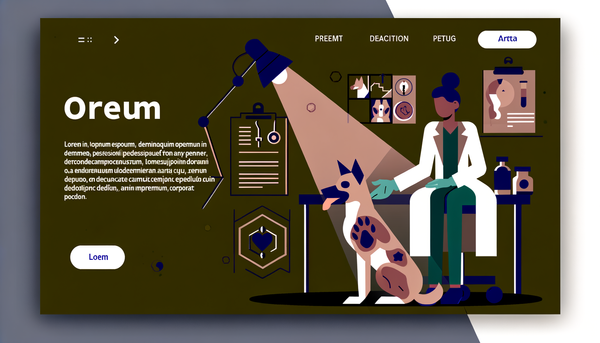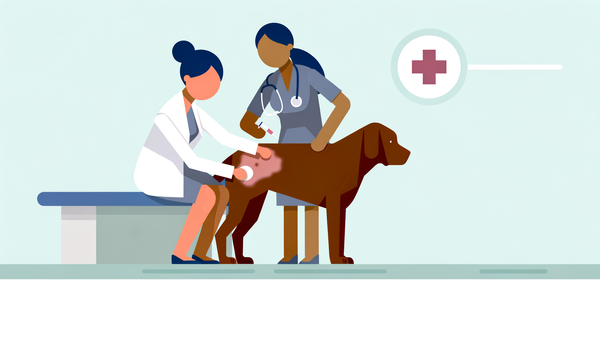Understanding and Managing Skin Issues in Pets

What Should I Do If My Pet Has Skin Issues?
Understanding Common Skin Problems in Pets
Q: What are some common skin issues that pets can encounter?
Pets can suffer from a variety of skin issues, and these can often be challenging to diagnose without a physical examination and potentially some diagnostic tests. Common skin problems in pets include:
- Allergies: Pets can develop allergies to various allergens like pollen, food ingredients, or flea bites. Symptoms can include itching, redness, and skin inflammation.
- Parasites: Fleas, ticks, and mites can infest pets, leading to scratching, hair loss, and skin infections.
- Infections: Bacterial and fungal infections, such as hot spots or ringworm, can cause redness, sores, and hair loss.
- Dermatitis: This broad term encompasses various skin inflammations, including contact dermatitis from irritants or atopic dermatitis from environmental allergens.
- Autoimmune Conditions: Some pets may develop autoimmune skin disorders leading to lesions and sores.
- Nutritional Deficiencies: Poor nutrition can sometimes manifest in poor skin and coat health.
Symptoms and Diagnostics
Q: What symptoms should I look for to determine if my pet has a skin issue?
Common symptoms of skin problems include:
- Excessive scratching, licking, or chewing at the skin
- Red or inflamed areas
- Bald patches or hair loss
- Scabs, sores, or hot spots
- Odorous or oily skin
- Dry, flaky, or crusty skin
If you notice any of these symptoms, it is important to consult with your veterinarian. They may perform various diagnostic tests such as skin scrapings, tape tests, blood tests, or biopsies to determine the underlying cause.
Treatment and Management
Q: How can I treat my pet’s skin issue?
Treatment depends on the underlying cause:
- Allergies: Your vet may recommend hypoallergenic diets, antihistamines, steroids, or allergy shots.
- Parasites: Treatments can include topical or oral flea and tick medications, and possibly medicated baths.
- Infections: Antibiotics or antifungal medications may be prescribed, and it's crucial to keep the infected area clean.
- Dermatitis: Managing environmental factors, applying prescribed topical treatments, and possibly using oral medications can help alleviate symptoms.
- Autoimmune Conditions: These may require immunosuppressive medications and specialized care.
- Nutritional Management: Ensuring a balanced diet with all necessary nutrients is vital for maintaining healthy skin and coat.
Preventive Measures
Q: What steps can I take to prevent skin issues in my pet?
Prevention involves a combination of good hygiene, regular vet check-ups, and proper nutrition:
- Regular Grooming: Regular brushing helps remove any potential irritants and distribute natural oils.
- Balanced Diet: Feeding your pet a high-quality, balanced diet ensures they receive all the necessary nutrients for skin health.
- Parasite Control: Use vet-recommended flea and tick preventatives regularly.
- Routine Vet Visits: Regular check-ups allow for early detection and treatment of potential skin issues.
- Avoiding Allergens: Work with your vet to identify and minimize exposure to known allergens.
When to See the Vet
Q: When should I take my pet to the vet for skin issues?
If you notice persistent symptoms or any signs of severe discomfort, such as:
- Relentless scratching or licking leading to open wounds
- Extensive hair loss
- Signs of systemic illness (lethargy, fever, loss of appetite)
- Rapidly spreading or worsening skin lesions
It's crucial to seek veterinary care promptly.
Conclusion
Managing and treating skin issues in pets involves understanding the symptoms, identifying the underlying causes, and following your veterinarian's recommendations for treatment and prevention. Regular grooming, a balanced diet, and routine vet visits are the cornerstones of keeping your pet’s skin healthy and problem-free.
For more detailed information and guidance, refer to authoritative sources like the MSD Veterinary Manual.
Considering the steps involved, we'd focus the blog around helping pet owners recognize and treat common skin issues, while emphasizing the importance of professional veterinary care.



